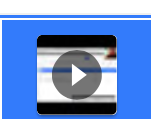Support for Choosing Text-Dependent Questions
Goals of this Module
While working through this mini-module on choosing text-dependent questions, educators will:
- Define the nature and purpose of text-dependent questions
- Determine if a question is or is not text-dependent
- Apply specific steps to evaluate or create text-dependent questions
- Connect all components of a lesson by reflecting on instructional goals
Defining a Text-Dependent Question
Text-dependent questions are questions that can only be answered by using a text to determine the answer. These questions help level the playing field for student success, because they are not dependent on prior knowledge. These questions encourage close examination of a text. Watch out for questions that can be "Googled", like "What does electrolyte mean?" Those are NOT text-dependent as they are written.
Examples include: Why did the author choose to use footnotes to define the words in the text? Why did the author not create more paragraphs?
Text-specific questions are a subset of text-dependent questions. These can only be applied to one particular text. Such as "What is the meaning of the word "blue" when describing the character on Tuesday?" or "Why does Shakespeare end Act 2 with a warning from the Friar?"
Evaluating Questions
For practice, examine the following questions:
1) What is the function of an enzyme? or What is the function of the enzyme in this study?
2) Why is there more than one enzyme found in the secretion of the venus fly trap? or What is an enzyme?
3) What are the factors that can impact enzyme function? or Which condition described in the text is mentioned as being optimal for the enzymes?
Text-dependent questions should have students go back to specific parts of the text to attend to the why and how of the text. This strengthens student critical analysis.
Creating or Modifying Questions
5 Steps from Student Achievement Partners (excerpted from http://www.oercommons.org/courses/short-guide-to-creating-text-dependent-questions/view )
- 1. Think about what you think is the most important learning to be drawn from the text. Note this as raw material for the culminating assignment and the focus point for other activities to build toward.
The shift is to start by looking at the text. Often we ask questions based on the content we expect students to know, but it may or may not come directly from the text. If the question does not come from the text, it doesn't mean it's not a good question to ask at some point. It just does not belong with a literacy lesson.
2. Determine the key ideas of the text. Create a series of questions structured to bring the reader to an understanding of these.
The shift is to create a series of inter-connected questions that build upon each other in both complexity and analysis. Previously, we often asked questions in isolation. Frequently in content areas (like science), we focused on content details, but we would sometimes leave out important scaffolds that help create student independence.
3. Locate the most powerful academic words in the text and integrate questions and discussions that explore their role into the set of questions above.
The shift is to teach content vocabulary by having students examine the words in context. Previously, we taught content words separately or in isolation. Now students should be learning content vocabulary by reading.
4. Find the sections of the text that will present the greatest difficulty and craft questions that support students in mastering these sections. These could be sections with difficult syntax, particularly dense information, and tricky transitions or places that offer a variety of possible inferences.
The shift is to support students in becoming independent readers. By asking questions in an intentional order, students can increase their confidence and ability to tackle complex texts.
5. Develop a culminating activity around the idea or learnings identified in criteria #1. A good task should reflect mastery of one or more of the content-area standards, involve writing, and be structured to be done by students independently.
The shift is to have all of the questions build to a single activity or assessment that demonstrates their learning. Previously literacy lessons were stand alone or "extra" assignments. Now, they should be part of the summative assessment for that unit.
Making the connections
A final reminder is that this type of assignment may be very difficult for your students at the beginning of the year. By providing interesting and challenging texts and tasks, students will begin learning the content through reading. Text-dependent questions remind us that deep analysis of a text can be how students learn content in all areas.
To support your process, the following video was filmed to talk through the above ideas.
